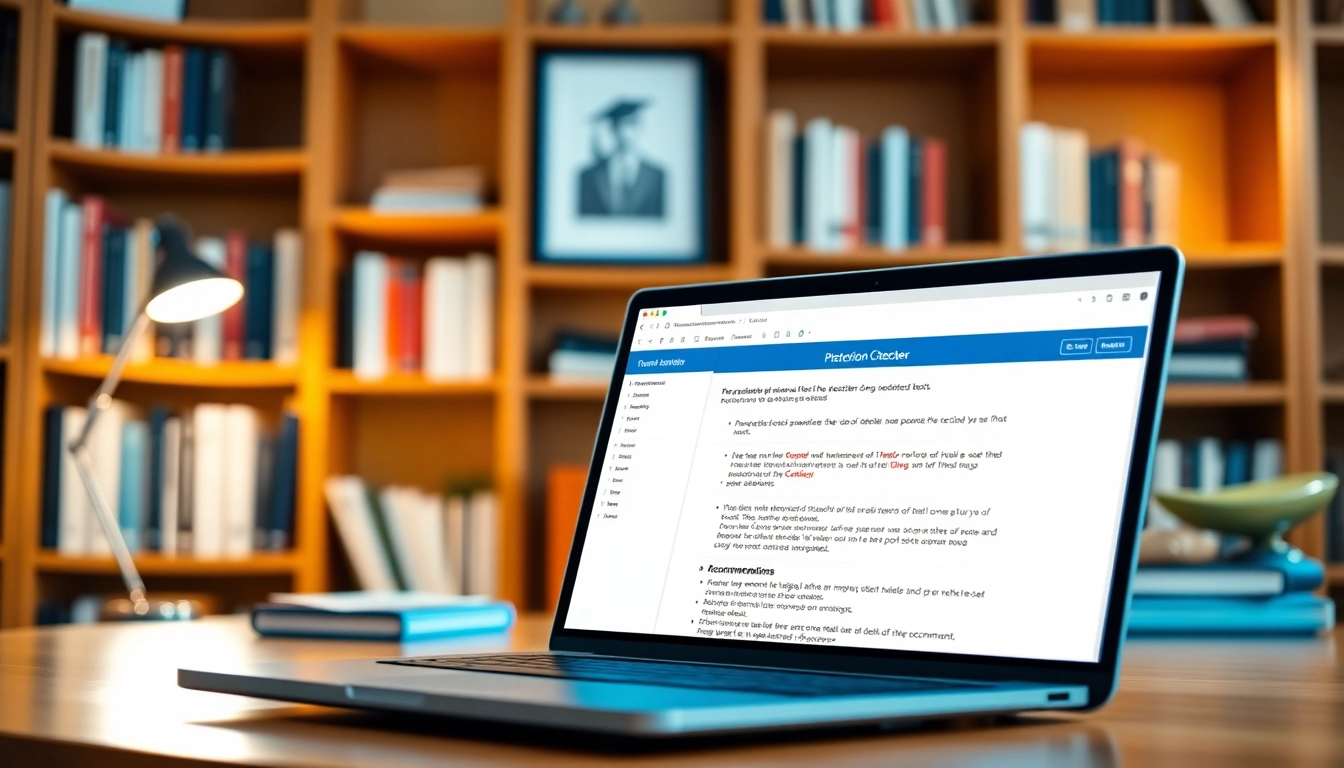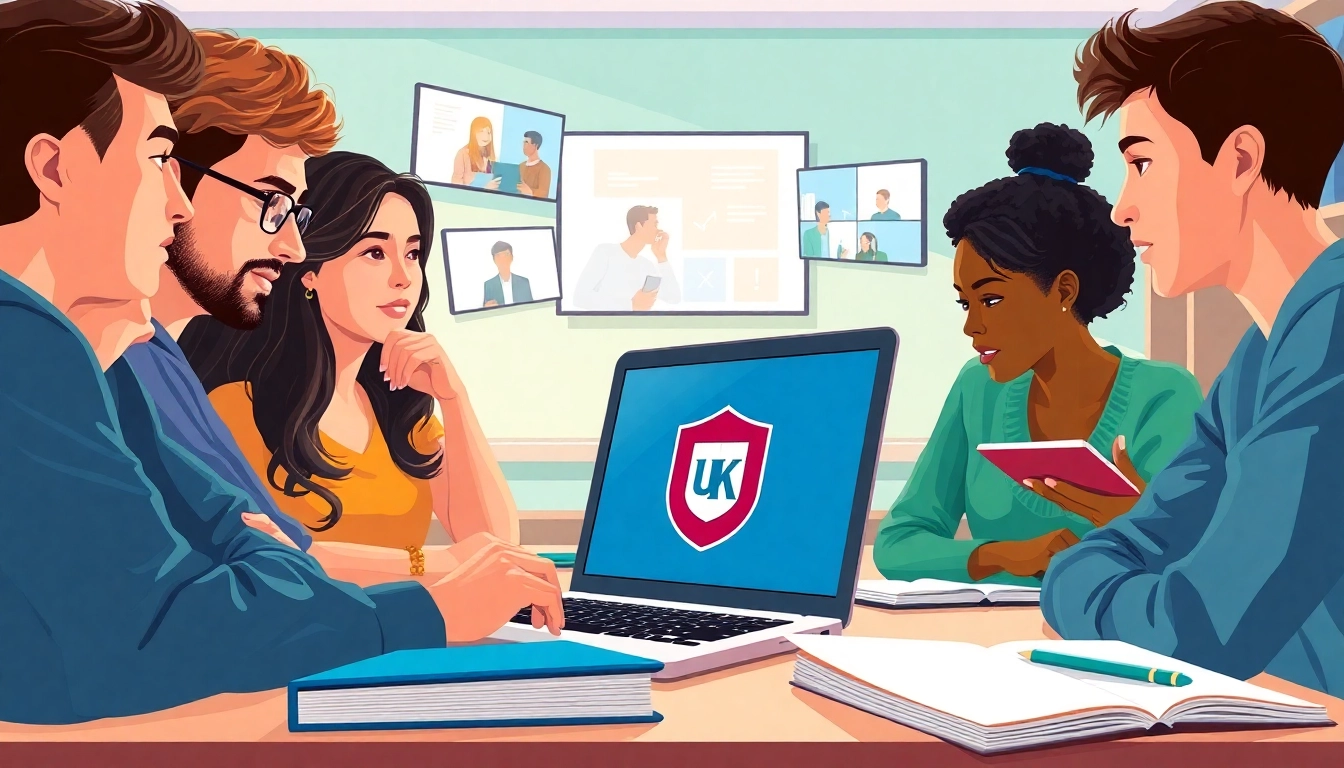Understanding Plagiarism Checkers
What is a plagiarism checker?
A plagiarism checker is a tool that verifies the originality of a piece of writing by comparing it against a vast database of existing texts. It scans for similarities between the submitted content and other published materials, ensuring that any uncredited use of someone else’s work is identified. With the rise of digital content, these tools have become essential for students, educators, and professionals alike to maintain academic integrity and uphold ethical standards in writing.
How does a plagiarism checker work?
Plagiarism checkers operate using advanced algorithms that analyze text for matching patterns. When a user submits a document, the checker first breaks down the text into segments, which are then compared with millions of documents, articles, and online sources. The comparison process involves recognizing phrasing, sentence structure, and contextual meaning. These tools utilize both traditional databases and web resources that contain a multitude of scholarly articles, blogs, and websites. Upon completion, the checker provides a report detailing the percentage of matched content, the sources of the original material, and areas that require attention.
Types of plagiarism checkers available
There are several types of plagiarism checkers available on the market, each tailored to different user needs. The primary categories include:
- Web-based checkers: These tools run in browsers and often offer free or freemium services. They are easy to access and use but may have limitations on document length and available features.
- Desktop applications: Software installed on personal computers that can operate offline and provide more comprehensive features such as detailed report generation and extensive database access.
- Institutional tools: These are often subscribed to by educational institutions, providing students and faculty with robust services as part of their academic integrity policies.
- AI-powered checkers: These advanced tools utilize artificial intelligence to intelligently assess writing styles and exposure to potential plagiarism, offering deeper analysis than traditional methods.
Importance of Using a Plagiarism Checker
Ensuring academic integrity
Maintaining academic integrity is paramount in educational environments. Plagiarism undermines trust and the value of education; therefore, using a plagiarism checker helps to ensure that students submit original work. It acts as a protective measure against unintentional plagiarism that can arise from poor paraphrasing or lack of proper citation practices.
Protecting your original ideas
Originality is a key value in any scholarly or professional field. A plagiarism checker provides writers with the assurance that their ideas and expressions are uniquely presented. By analyzing their work against a vast body of existing literature, they can identify and rectify instances where their unintentional overlaps may dilute the uniqueness of their contributions.
Meeting institutional requirements
Many educational institutions have guidelines regarding the submission of original work. Plagiarism checkers help students meet these requirements by ensuring their documents are compliant with academic standards. Professors and institutions often expect that students use these tools to verify that they are adhering to ethical writing practices, thus placing importance on their use.
Choosing the Right Plagiarism Checker
Key features to look for
When selecting a plagiarism checker, users should consider several critical features to ensure that the tool meets their needs. Essential features include:
- Database size: A larger database increases the likelihood of detecting potential matches and providing comprehensive results.
- Report detail: The capability of generating detailed reports that not only highlight matches but also provide citation suggestions and sources is invaluable.
- User interface: A user-friendly interface can enhance the experience, making it easy to upload documents and interpret results.
- Cost: Pricing structures vary, so evaluating cost against offered features is essential for optimizing value.
Comparative analysis of popular tools
While there are numerous plagiarism checkers available, performing a comparative analysis based on user needs can help in selecting the best tool. Users can look at functional aspects such as accuracy, databases searched, turnaround time for results, and additional features like grammar checks. Each tool may have its strengths that align with the specific requirements of different user groups, such as students versus professional writers.
Cost vs. benefit evaluation
A thorough cost-benefit analysis is vital when choosing a plagiarism checker. Users should reflect on factors such as the frequency of use, the importance of maintaining originality in their work, and if the potential risks of plagiarism warrant investment in a premium service. Free tools often suffice for casual use, but professional or academic requirements may necessitate premium features that justify the expense.
How to Use a Plagiarism Checker Effectively
Step-by-step guide to running checks
Using a plagiarism checker effectively involves a straightforward process:
- Prepare your document: Ensure your writing is finalized and saved in a compatible format (e.g., .docx, .txt).
- Select the right tool: Based on your earlier research, choose a plagiarism checker that best suits your needs.
- Upload your document: Follow the tool’s instructions to upload or copy-paste your content into the designated area.
- Run the check: Initiate the plagiarism detection process, allowing the tool to analyze your text.
- Review the results: Once completed, carefully review the report, noting the percentage of originality and highlighted similarities.
- Make revisions: Address any flagged content to enhance originality before resubmitting your work.
Interpreting results from your plagiarism checker
Once you receive the report from the plagiarism checker, it’s crucial to understand the findings. Look for:
- Overall plagiarism percentage: This indicates how much of your text matches existing content.
- Specific instances of plagiarism: Check the highlighted sections and note which parts require improvement or citation.
- Sources of matches: Analyze the origins of the detected matches to determine if they require proper attribution.
Best practices for revision
After interpreting the results, consider adopting best practices for revising your document. This can include:
- Paraphrasing: Rewrite highlighted sections in your own words while maintaining the original meaning.
- Citing sources: Ensure that all borrowed ideas or direct quotes are properly cited to avoid claims of plagiarism.
- Using quotes: If a phrase or sentence is perfectly phrased by another author, consider using quotation marks along with citation.
Future Trends in Plagiarism Detection
AI advancements in plagiarism checkers
The future of plagiarism detection is closely tied to advancements in artificial intelligence. Modern plagiarism checkers are increasingly integrating AI-based capabilities to enhance their analysis. Emerging trends include understanding contextual similarities, recognizing paraphrased content, and providing nuanced feedback tailored to improving originality. Such advancements allow these tools to better aid users in avoiding unintentional plagiarism while refining their writing skills.
Emerging concerns regarding originality
As technology advance, concerns over originality amidst evolving writing styles and formats surface. Notably, AI-generated content raises new questions about original authorship and the potential for plagiarism in machine-generated texts. Plagiarism checkers are tasked with keeping pace to ensure they can accurately detect similarities within a growing landscape of diverse content.
Ethical considerations in plagiarism detection
Finally, as plagiarism detection tools evolve, ethical considerations regarding their use must also be addressed. Factors such as user privacy, accuracy in reporting, and the implications of false positives must be taken into account. Educational institutions and individuals must navigate the fine line between fostering originality while ensuring fair evaluations of work, upholding both ethical standards and academic integrity.



